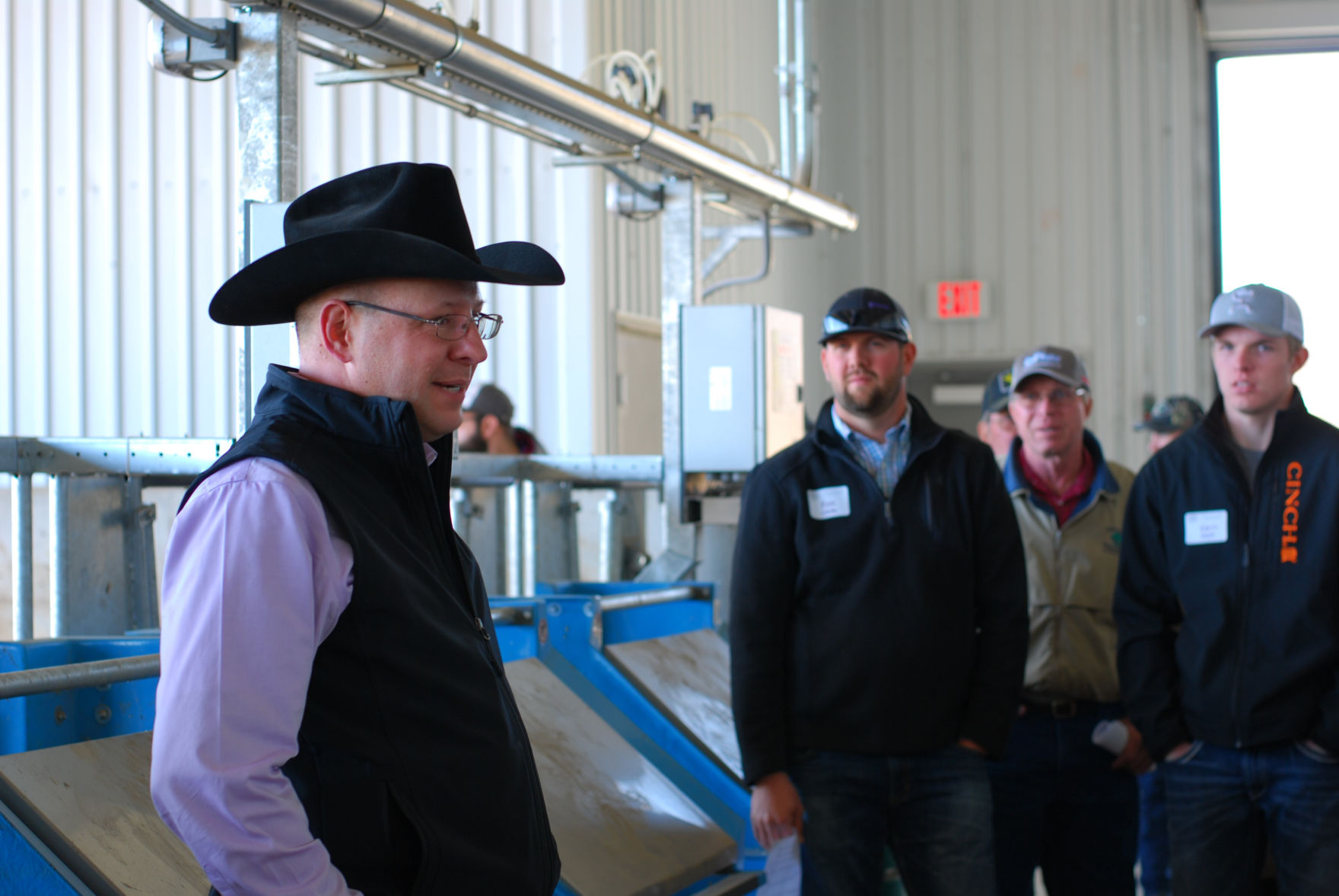Kansas State University works to help cattle producers be as efficient as possible

The view has changed in 145 years, since the first structure was built on a sprawling and open Kansas State University campus to teach students how to care for, breed and market livestock.
While that barn is long gone and the beef industry has evolved, the knoll on the north edge of Manhattan is still an avenue for learning and research.
Improving producer profitability remains part of the mission of the university’s new Purebred Beef Unit, which opened last year, said professor and Extension beef specialist Bob Weaber during the 2018 Cattlemen’s Day March 2.
Weaber, who specializes in beef breeding, genetics and cow/calf production, led visitors through the unit’s new Bull and Heifer Development Center. The new center strengthens research capabilities, including the study of feed efficiency through its 300 head of purebred, breed-aged cattle.
Feed costs are one of the larger inputs that producers can control. Weaber said the facility allows for the development of advanced selection programs aimed at improving cattle efficiency and growth.
“Feed efficiency is a really important component,” he said. “One reason we built this facility is to get differences in efficiency and try to breed some stock that excel in that trait.”
The dollar value associated with improved feed efficiency
Feed is one of the most significant costs of livestock production and can represent 60 to 70 percent of production costs.
A 10 percent improvement in feed efficiency across the entire commercial feedyard sector would reduce current feed costs by $1.2 billion a year, Weaber said.
“We have 26, 27 million head of fed cattle in the U.S.,” he said. “That really adds up.”
For instance, about half of the calories consumed in the value chain goes to cow maintenance, meaning there is an opportunity to better understand maintenance costs in an effort to decrease annual cow costs.
Cow size and milk production are both moderate to highly heritable traits that affect maintenance costs, he said.
“So, one of the things we have done here is our system is designed not only to measure feed intake on growing animals but also the ability to take cow/calf pairs, put them on confinement and measure the complete feed intake of the cows and the calves.”
In the new facility, cattle are in a drylot system with covered feed bunks and state-of-the-art Insentec technology.
“We built a system that, to my knowledge, is the only one on the planet that has both the large cow bunks and a set of smaller calf bunks that we can measure individual feed and water intake for both cows and calves,” Weaber said.
For example, the system measures the weight of the feed bunks before and after feeding. All cattle have a radio frequency identification device, which gets scanned when the animal sticks its head into the bunk.
“The system measures every meal event, how much they ate and how long it took them to eat,” he said.
Other studies
The technology adds to the capabilities of genetic selection and research at the unit. But besides studying feed efficiency, Weaber said students and faculty can also test multiple diets in the same feeding pen, control feed intake and do a number of nutritional experiments.
“It really augments the ability to test different feed increments or rations head to head,” Weaber said.
He noted the last meaningful work on the differences between cow size, maintenance costs and breed were done in the late 1970s and 1980s. Yet cattle and breed specifications have changed a lot since then.
“Most estimates suggest we have changed a mature cow size by about 300 pounds of animal during that same period of time,” Weaber said. “So there has been a lot of change in genetic potential across all breeds for growth and lactation.”
Over time, Weaber hopes to gather feed intake data to quantify those changes and help producers understand the cow costs associated with different nutritional requirements.
Weaber added there are studies on water intake, too. Assistant professor Megan Rolf, who joined the animal sciences department in 2016, is leading a genetics and genomics study on water intake and beef cattle—continuing research she started at Oklahoma State University.
Pointing to the western third of Kansas, Weaber noted water is “going to become a bigger and bigger deal.”
But there is no daily recommended water intake for growing animals, he said.
“There are rules of thumb stuff and not much data. But, when we built this system, we have the ability to measure individual water intake coupled with individual feed intake in an environment.”
Cunningham farmer Dean Fitzsimmons toured the facility with his daughter, Ashley, a senior at K-State. Fitzsimmons, who has a cow/calf operation, said it was his first time to Cattlemen’s Day.
“This has probably been the most interesting part of my day,” Fitzsimmons said of the tour. “Going through this has been interesting to me—to watch how they are trying to do research on water consumption, feed consumption and use that in genetics.”
Weaber said as ranchers strive to produce more food for the domestic and international markets, they also must strive to make their business successful.
“Being efficient and selecting for efficiency helps us meet consumer demand,” he said.
Amy Bickel can be reached at 620-860-9433 or [email protected].

